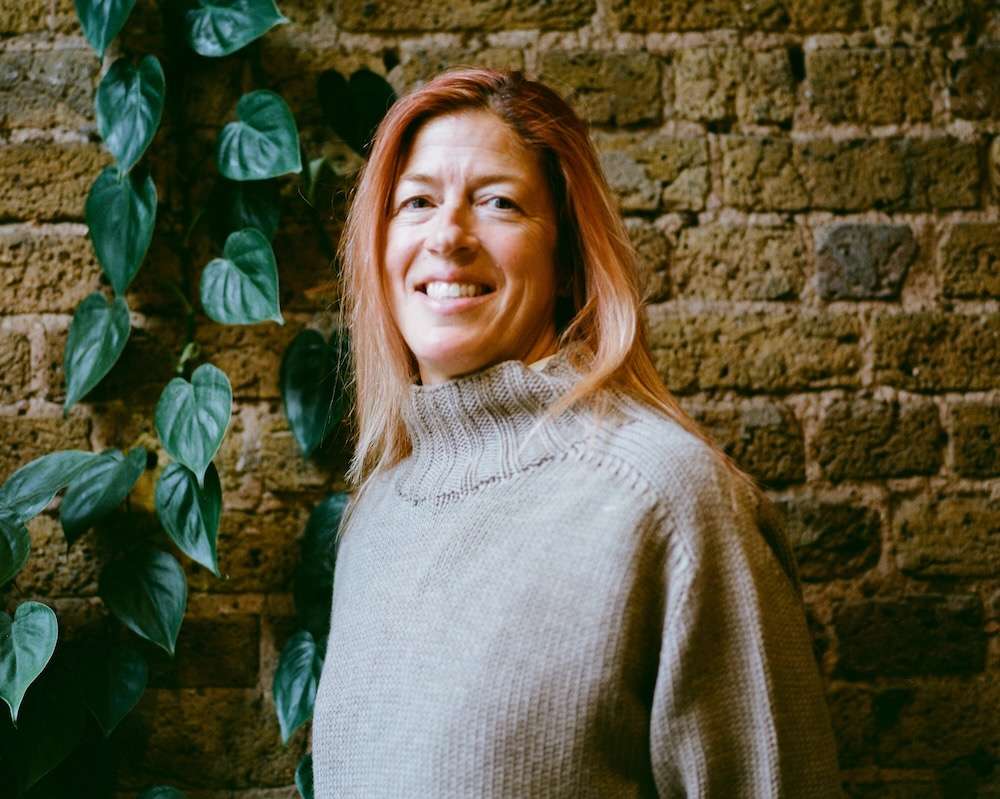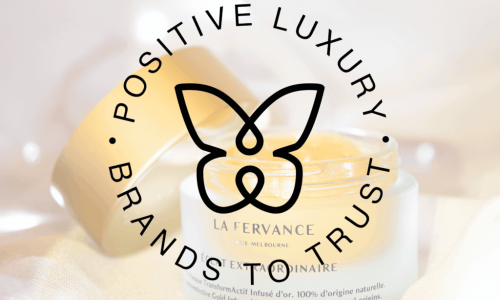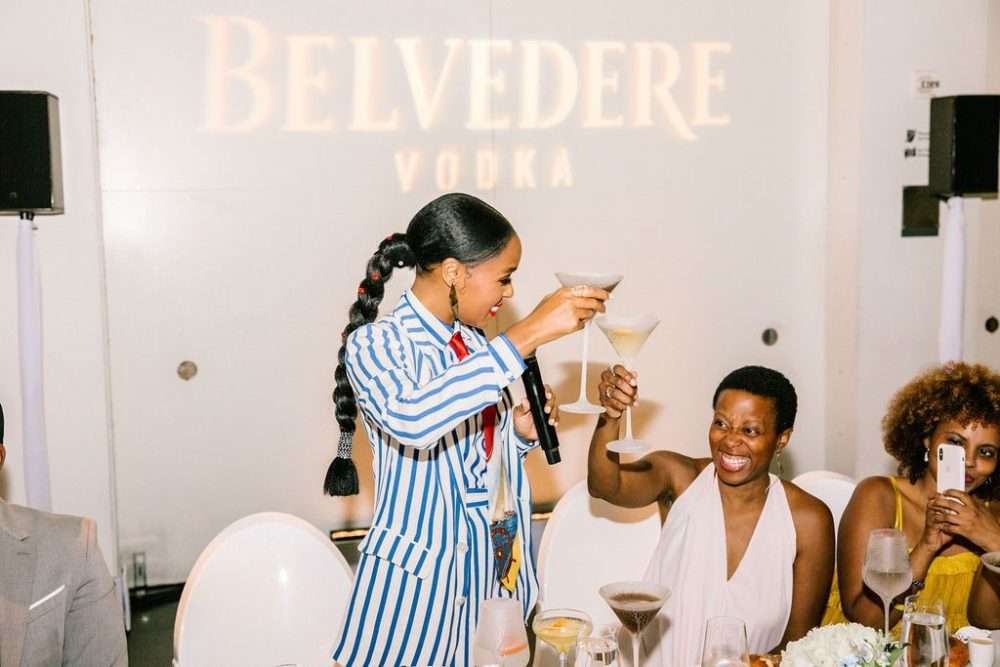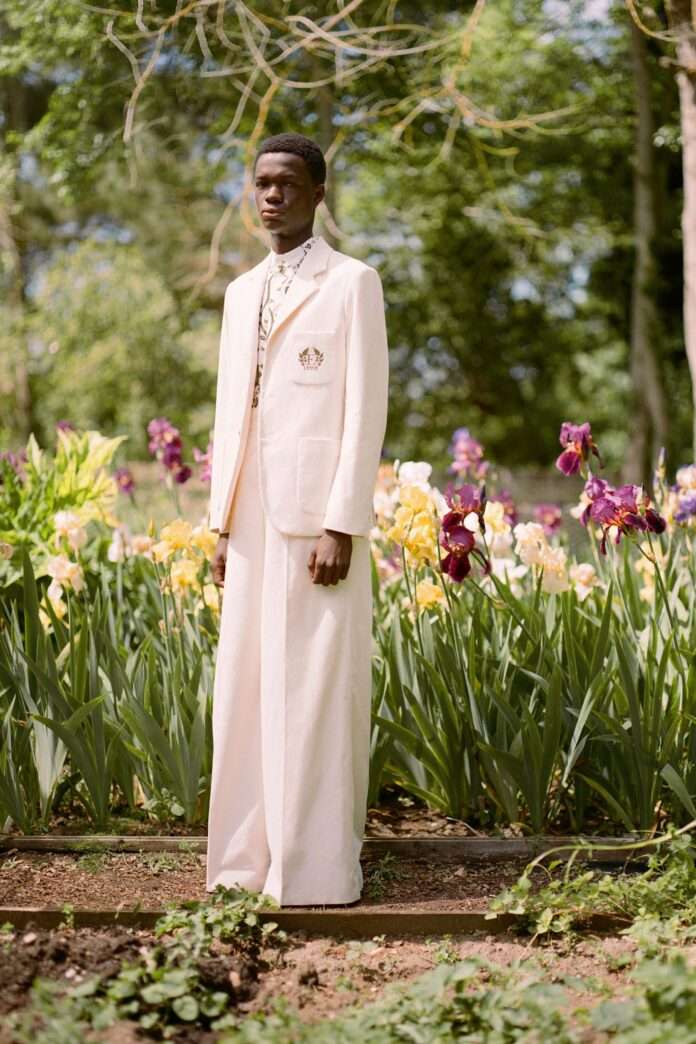For Amy Nelson Bennett, Co-CEO of Positive Luxury, known for its esteemed Butterfly Mark accreditation, the luxury sector is more than just aspirational — it’s setting the bar for sustainability.
According to Amy Nelson Bennett, Co-CEO of Positive Luxury, the London-based consultancy that works to improve sustainability principles within luxury brands, transparency will play a significant role in the success of all industries — not just luxury. But, the luxury sector’s role is critical as it’s the luxury brands that lead the way forward and set the trends that become mainstream.
Positive Luxury is best known for the Butterfly Mark, which it awards to qualifying brands through a rigorous assessment process, involving an ESG (Environmental, Social, and Governance) methodology plus an innovation criterion. More than 170 companies have earned the mark across fashion, beauty, and homewares. Companies must score at least fifty percent in each category and demonstrate continuous improvement. This certification, valid for two years, requires businesses to show progress upon renewal. Notably, the program provides personalized support and guidance, which is particularly beneficial for small businesses without dedicated sustainability officers.

The Butterfly assessment framework includes 23 drivers of sustainability across four pillars: Governance, Environment, Social, and Innovation. “We use double materiality to identify the drivers highly relevant to each of the luxury sectors we support, and, within each driver, questions are tailored according to the client’s business size, industry model, activity, and locations,” says Nelson Bennett. For a small business, this may result in 250 data points, for a large company it may be 500. Each brand has a dedicated account manager, who verifies all answers and evidence to assess performance and provides coaching and tools to help fast-track ESG performance. When a business reaches the necessary standards across all the pillars to earn the Butterfly Mark, the brand is then independently double-verified by another member of the Positive Luxury Client Success team.
Lucy Litwack, CEO of Coco de Mer, praised the support offered by Positive Luxury to small labels like Coco de Mer. “What is brilliant about Positive Luxury — coming from a small business where we don’t have a sustainability officer for example — they have account managers and people who support you throughout the journey and that was helpful for us. It helped us to achieve what was needed,” she says.
Ethos caught up with Nelson Bennett to learn more about Positive Luxury and how it envisions the future of the sustainable luxury sector.
*This interview is edited for length and clarity.

Ethos: Could you elaborate on the role of innovation in the assessment framework for the Butterfly Mark?
ANB: All companies in assessment toward Butterfly Mark certification must provide evidence of a focus on the future and solving problems facing the world. We examine areas including research and development, critical thinking, and concept development to ensure organizations truly support innovation activities from the conception of any product or service. A company must demonstrate that it understands how critical a culture of innovation is to meet its sustainable goals and evidence that it is channeling focus and resources towards sustainability innovation.
Ethos: How is the Butterfly Mark accreditation different from other sustainability certifications like B Corp, particularly in terms of reassessment and reporting requirements?
ANB: The Butterfly assessment isn’t one-size-fits-all. Using double materiality and smart technology to tailor the assessment to the specifics of each business, our program is 100 percent bespoke to each client. Because all luxury brands are different and because luxury is a non-commoditized industry with specific risks and opportunities, we tailor our assessment to help us delve deeper into the most important topics for each brand and make sure no important details are left out. We consider a brand’s impact on things like climate, water, and nature. We have a team of luxury experts to support brands through the assessment process and another team of marketing specialists helping brands communicate their sustainability efforts and make claims credibly and transparently as part of their communication strategy. The Butterfly Mark is the mark of Real Change and as such brands that have been awarded it have the opportunity to update their assessment for review every six months to improve performance scores, which upon verification automatically updates their brand passport.

Ethos: What impact has the Butterfly Mark had on consumer perceptions and behaviors toward luxury brands that are certified?
ANB: Sustainability remains a high consideration factor across all generations but in particular Generation Z; and with the global luxury industry growth driven by Millennials and Generation Z, it is an area luxury brands cannot afford to ignore. The Butterfly Mark stands for the highest standards, but it is more than just a piece of IP. It is the rigor of our assessment and certification standards, along with communication tools and coaching we provide to help companies build trust with the growing percentage of luxury consumers looking to align their values behind brands providing evidence of positive actions benefitting nature and people.
Ethos: How does Positive Luxury ensure the thoroughness and credibility of its evaluation process for awarding the Butterfly Mark?
ANB: The Butterfly Mark is awarded by a panel on the verified results of our comprehensive ESG+ Progress Assessment. This tool is based on global goals (such as the UN Sustainability Development Goals and the Paris Agreement), internationally respected reporting frameworks (such as GRI, SASB and TCFD), and leading sustainability legislation such as CSRD (Corporate Sustainability Reporting Directive) just going live in the E.U. The structure of each of the 23 drivers in our framework is aligned with the ISO process: policy, risks, opportunities, metrics, targets, and strategy.
After answering a series of questions and providing evidence, we identify gaps and areas for improvement. When a company can demonstrate that it has delivered the necessary changes and reached a minimum score of 50 in each of our three core pillars, only then do we award them the Butterfly Mark in recognition.

Ethos: How does Positive Luxury plan to evolve the Butterfly Mark accreditation to keep pace with changing sustainability standards and legislation?
ANB: The Butterfly assessment framework is reviewed and updated every two years ensuring it remains in line with existing and proposed legislative changes. Our platform also supports clients with a legal tracker, ESG data storage, integrated ESG management systems, and performance improvement tracking to support growing disclosure and reporting requirements.
Ethos: With the increasing importance of sustainability in the luxury market, what future trends do you anticipate in the relationship between luxury brands and sustainability accreditations like the Butterfly Mark?
ANB: Legislation will continue to have an increasing impact on luxury brands particularly regarding reporting and greenwashing. 2024 marks the first wave of E.U. businesses reporting against the Corporate Sustainability Reporting Directive (CSRD). Amongst a huge wave of new regulations at the proposal stage in 2023, we expect the U.S. Securities and Exchange Commission to finalize its Corporate Climate Disclosures regulation by the end of the year. This and the TNFD mandate will both hit large public companies in 2024.
And, due to the shameful proliferation of greenwashing in recent years, the era of voluntary disclosure and innocuous commitments is at last coming to an end. Brands’ green claims and the standards of businesses like Positive Luxury will be subject to careful scrutiny and financial penalties in the U.K., E.U. and U.S.
The fast-growing preference among affluent luxury consumers to align their spending and advocacy to sustainable businesses will accelerate the need for greater transparency from luxury brands. Those companies delivering real change, and then successfully blending luxury storytelling and data-led evidence, will be the luxury brands that benefit first and most from the shifting consumer and employee landscape.
Related on Ethos:


